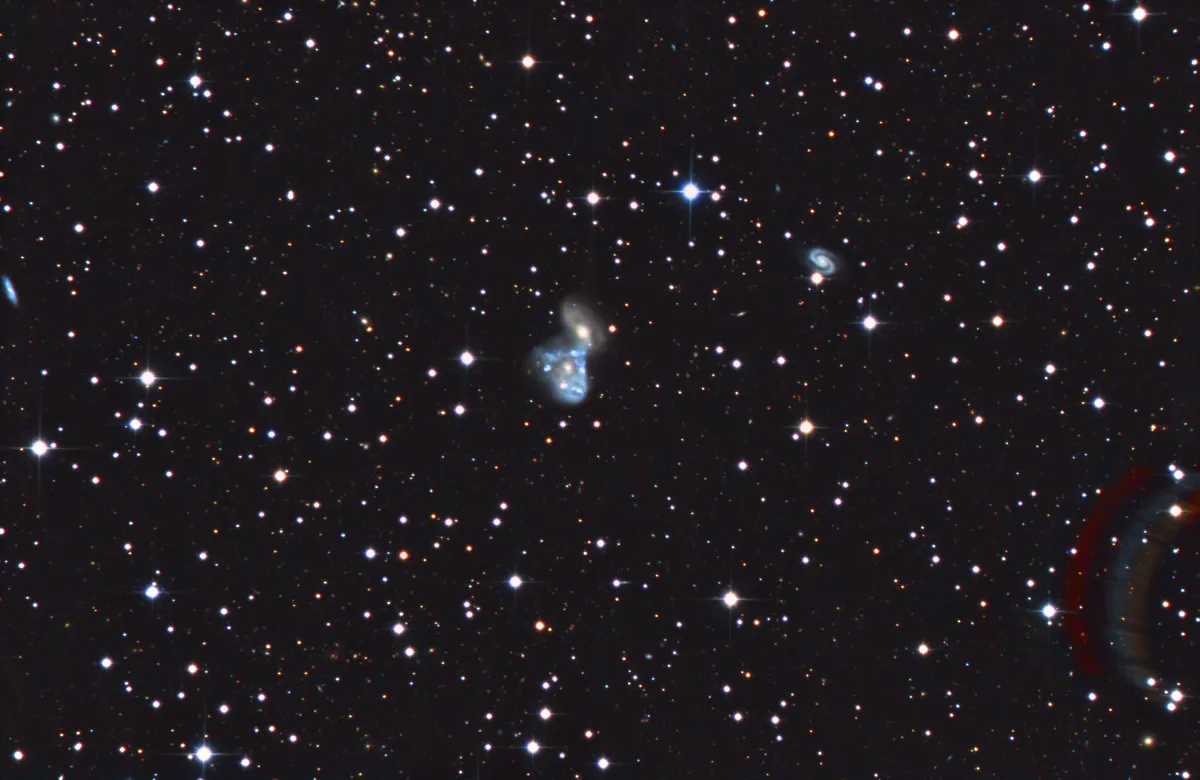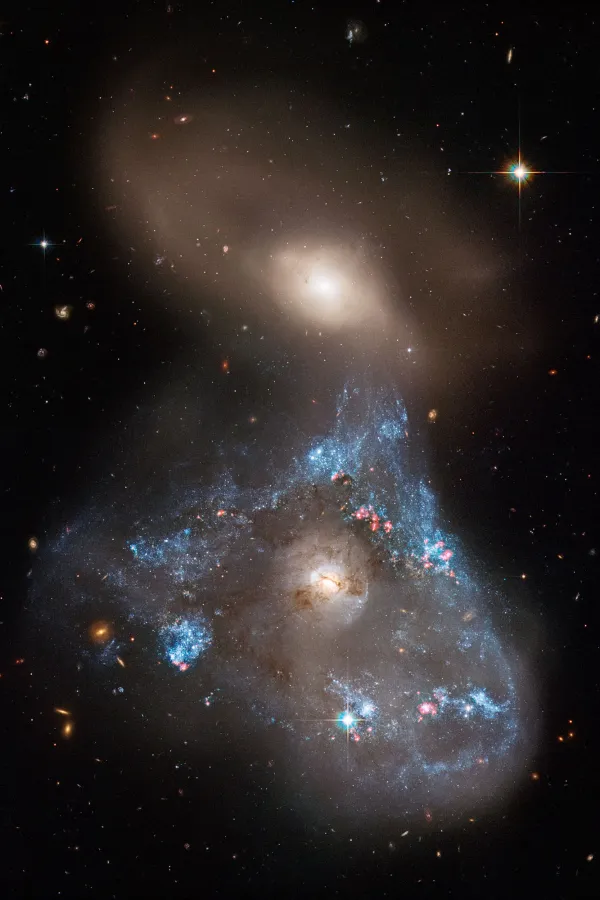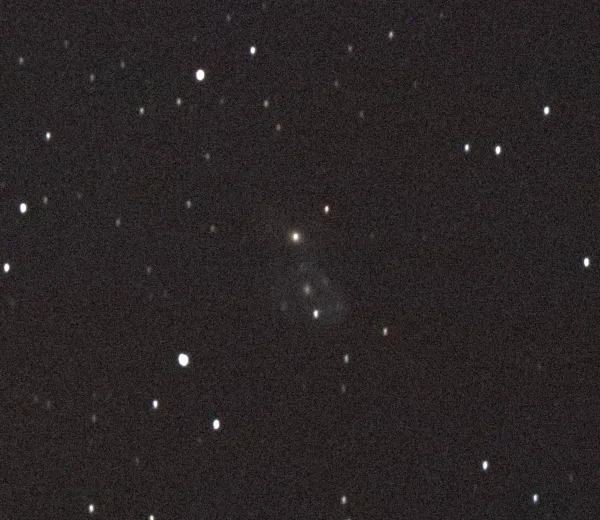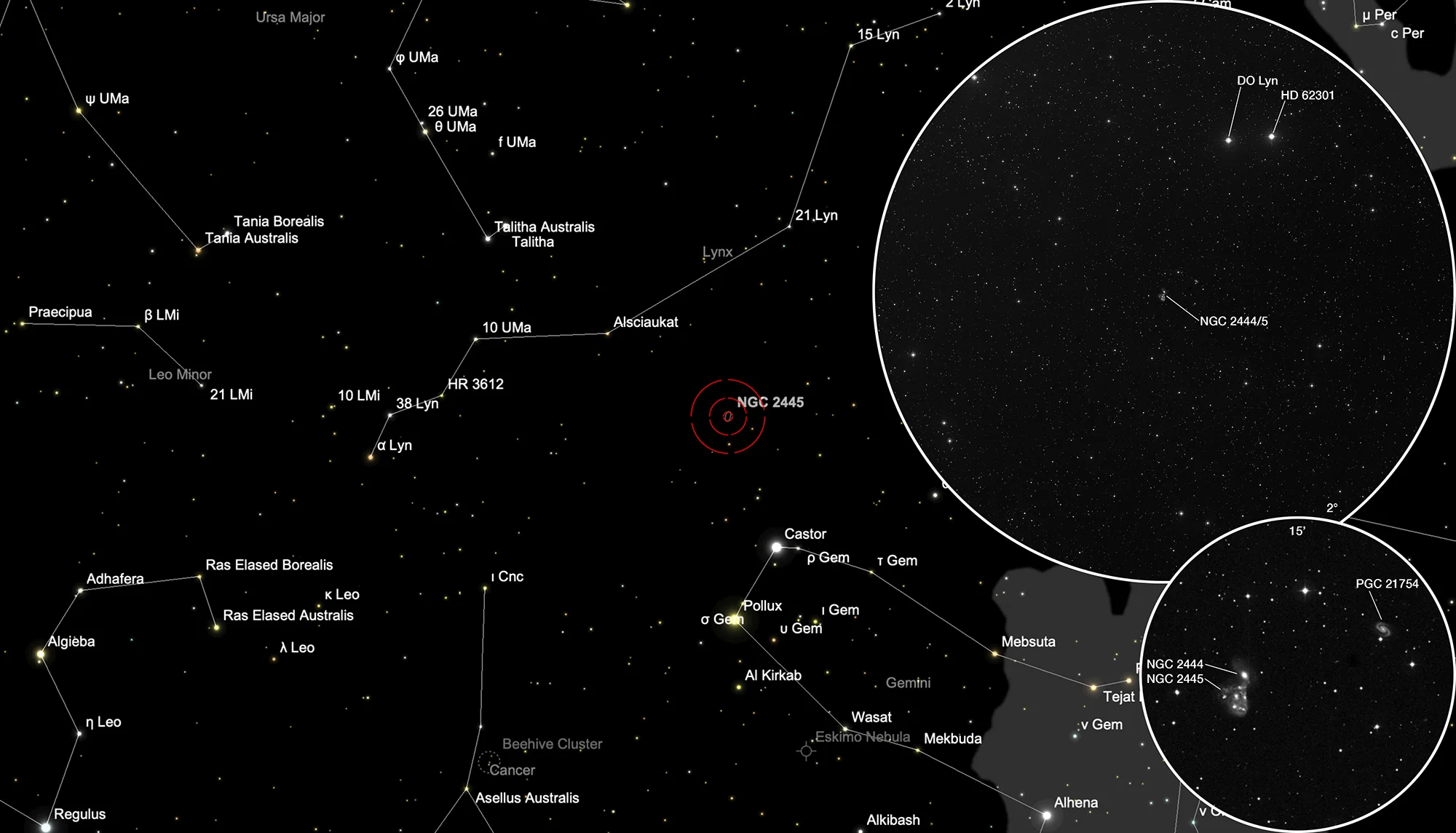Pair of Galaxies NGC 2444/5

History
This pair of galaxies was discovered on 18 January 1872 by the French astronomer Édouard Stephan using the 31 inch Foucault reflector at Marseille observatory. [277]
In Halton Arp's «Atlas of Peculiar Galaxies» from 1966 the two galaxies NGC 2444 and NGC 2445 are listed as Arp 143. He classified it as material emanating from an elliptical galaxy and noted: «diffuse counter filament». [199]
Physical Properties

This object shows a spectacular head-on collision between two galaxies. They probably already passed through each other once, which has ignited the star-formation in the unusual triangular-shaped galaxy NGC 2445, which is rich in gas. Young blue stars have tinted the galaxy in a blue-ish colour. The age of the stars in this bridge is estimated to be between 50 and 100 million years, while those in the centre of NGC 2445 are no older than one to two million years. Another interesting feature of NGC 2445 are the dark filaments of gas in the bright core, which may have been formed by outbursts of material. Radio observations reveal a powerful source in the core that may be spearheading the outbursts. The radio source may have been produced by intense star formation or a black hole gobbling up material flowing into the centre.
NGC 2444 appears to be winning this battle as this galaxy is pulling gas from NGC 2445. NGC 2444 contains old stars and no new starbirth because it lost its gas long ago, well before this galactic encounter. The gravitational tussle has stretched NGC 2444 into an odd shape, yanking gas far from the galaxy. [516] The distance is estimated to 63.3 Mpc. [194]
| PGC | RA | Dec | Type | Dim | Btot | HRV | PA | Names |
|---|---|---|---|---|---|---|---|---|
| PGC 21754 | 07 46 18.8 | +39 04 00 | S | 1.0 x .7 | 15.1 | MCG 7-16-15, CGCG 206-22 | ||
| PGC 21774 | 07 46 53.0 | +39 02 00 | L M | 1.2 x .8 | 14.2 | 4032 | NGC 2444, UGC 4016, MCG 7-16-16, (CGCG 206-24), (VV 117), (ARP 143) | |
| PGC 21776 | 07 46 54.7 | +39 01 01 | I M | 1.4 x 1.1 | 13.9 | 3998 | NGC 2445, UGC 4017, MCG 7-16-17, (CGCG 206-24), (VV 117), (ARP 143), IRAS 7435+3908 |
Finder Chart
The pair of galaxies NGC 2444/5 is located in the rather inconspicuous constellation Lynx. The two ~7 mag stars roughly 0.5° north of this pair help with alignment of the telescope. The best time for observation is in the months from September to June, when it is highest in the sky.
Visual Observation

400 mm Aperture: Sometimes one just has to admit, that nothing is to be seen here. — 400 mm f/4.5 Taurus Dobsonian, Hasliberg, SQM 21.2, 3. 2. 2024, Bernd Nies
762 mm Aperture: The irregular galaxy pair NGC 2444 and NGC 2445 shows a fine halo around two bright, star-shaped cores. In the EAA image, the halo around the yellowish galaxy nucleus can only just be guessed. — 30" SlipStream-Dobson f/3.3, EAA-Photo, Canon EOS R, 10s bei ISO 40'000, Hasliberg, SQM 21.3, 3. 2. 2024, Eduard von Bergen
